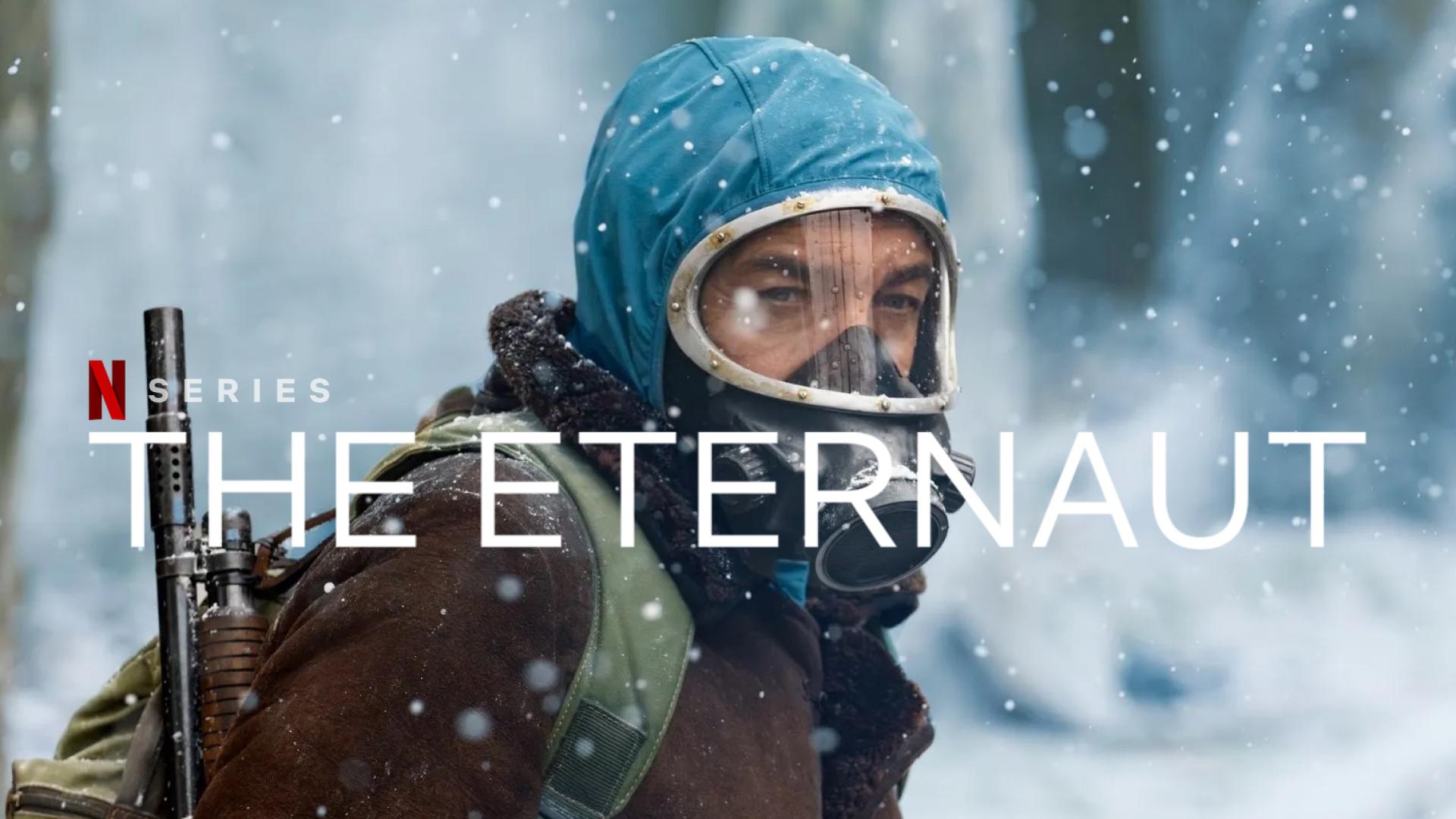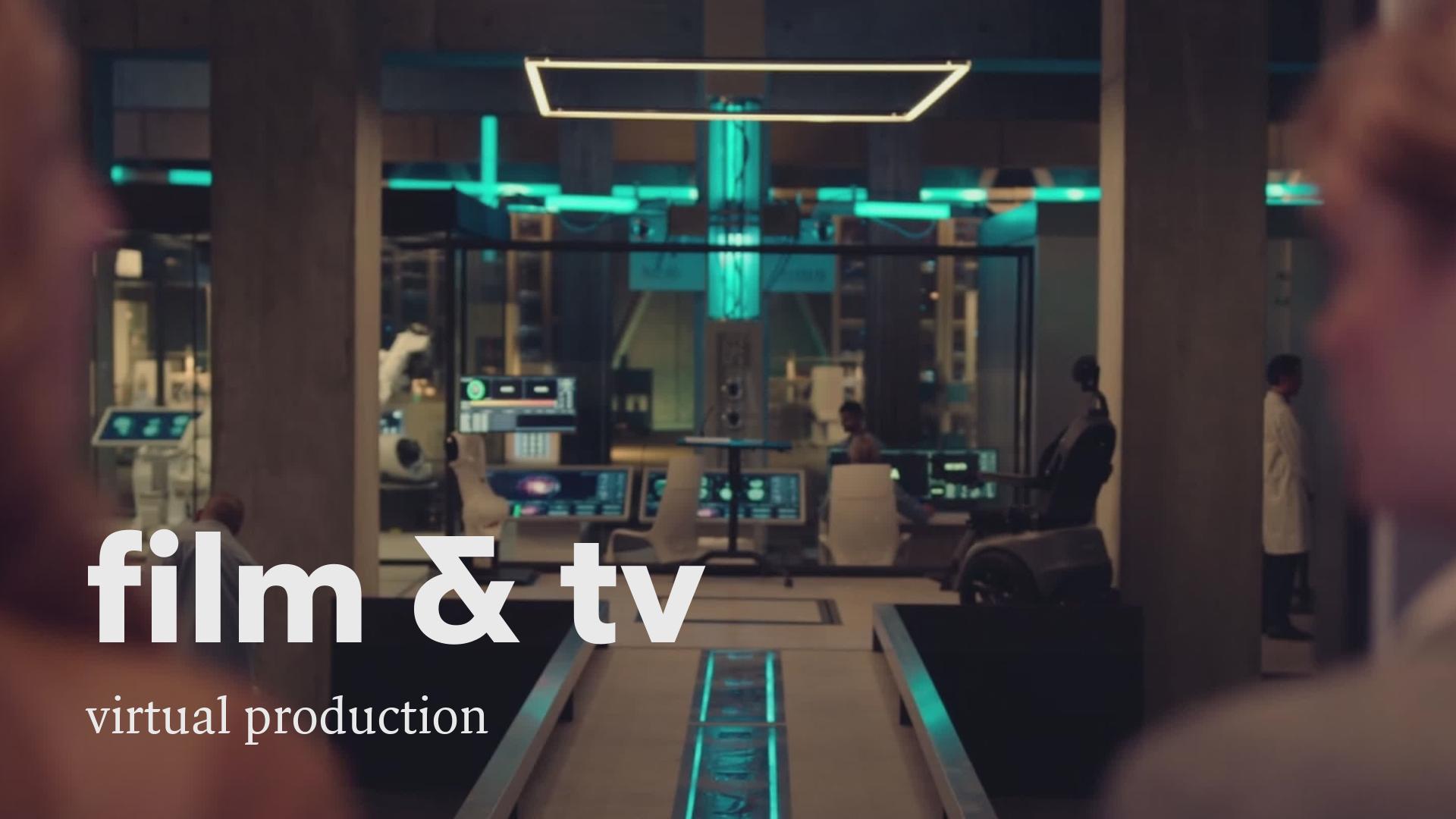
Recreating the Amsterdam Apple Store, an iconic yet inaccessible location, was one of the biggest challenges in iHostage.
Since filming on-site was not possible, the production design team, led by Florian Legters, built a full-scale replica of the store’s interior. To bridge the gap between set and location, our VFX team at Planet X created a digital version of the entire store, both the exterior and the interior as seen from the outside (including the main characters inside), and integrated it seamlessly into real footage of Leidseplein.
The result is a convincing blend of CG and live action, powered by detailed scans, photoreal environments, and precise camera tracking.
digitally reconstructing an iconic location
While exterior filming was allowed at Leidseplein, the Apple Store itself could not be accessed, and its lighting and interior could not be controlled. Any filming would have to capture the store as-is, regardless of story needs.
This limitation prompted a bold solution: recreating the Apple Store entirely in CG and integrating it seamlessly into the live-action footage.
set build meets cg integration
A full-scale interior replica of the Apple Store was constructed inside an airplane hangar, serving as the basis for all interior scenes. However, to bridge the gap between the interior and the real-world exterior, the VFX team chose to create a digital model of the store based on the replica, rather than the actual building. This approach ensured visual consistency across cuts from interior to exterior and avoided visual mismatches that might arise from architectural differences.
Virtually all exterior shots showing the Apple Store are fully computer-generated. Using detailed scan data captured from the Leidseplein, Planet X rebuilt the surrounding square and integrated a photorealistic version of the store with full lighting, reflections, and dynamic elements like crowds and trams. This allowed the filmmakers to place the store in its real-world context while retaining complete creative and technical control.
Read an in-depth case study of this unique approach here.
From the earliest stages of pre-production, the VFX and Virtual Production teams collaborated closely. Storyboards mapped out the core visual beats, and Planet X’s VR previs tool DeepSpace was used to develop camera plans and test shots. With the set previsualized in SketchUp and imported into DeepSpace, the team could simulate lensing, light falloff, LED wall angles, and CG composition long before the cameras rolled.
This workflow was essential, as the Apple Store could not be researched or documented during prep. Virtual previsualization helped answer questions that would otherwise remain open until production began.
high-fidelity shared assets
One of the project’s most effective technical strategies was the reuse of assets across both Virtual Production and VFX. The same 3D environment built from the Leidseplein scan powered real-time LED wall backgrounds and later served as the foundation for high-resolution VFX shots.
While the VP scenes could rely on slight defocus and real-time optimization, the VFX pipeline demanded high-detail, photorealistic render passes. The team’s ability to use the same asset across both workflows ensured continuity and saved valuable time in post.
introduction
On November 14, 2023, a team of 25 people set out to digitally capture one of Amsterdam’s most iconic locations: the Leidseplein in the city's centre. The scan was part of a research pilot led by ReadySet Studios, in collaboration with the Netherlands Film Fund, the City of Amsterdam, and Planet X Technologies. The goal: to explore how existing urban locations could be virtualized for film and television production, reducing pressure on crowded areas in the city.
While the scan was initiated independently from any specific production, it soon proved its value. When the Netflix thriller iHostage needed a detailed and controllable version of Leidseplein for key scenes, the recently scanned data offered the perfect solution. The filmmakers were able to recreate the location as a 3D virtual location on a massive LED volume, without the need to shoot on-site.
creating a digital twin
To bring this vision to life, Planet X partnered with Leap3D, a company specializing in high-accuracy 3D laser scanning. For this operation, Leap3D deployed a terrestrial laser scanner capable of capturing environments with impressive speed and precision.
Working alongside a ground photography team and drone pilots from Zero Gravity Drone, the crew collected over 40,000 images in a single day. These were combined and processed into an interactive 3D model that accurately reflects every detail of the square, from building facades and street surfaces to the spatial layout of sidewalks and tram lines.
Once processed, the digital data became a virtual set. Using a massive 60-meter-wide LED wall, the scanned environment was displayed in real-time as an immersive backdrop. This allowed the production team to control everything: lighting conditions, camera angles, and even virtual elements like vehicles and passersby.
For productions like iHostage, this meant being able to recreate a complex urban setting without needing to navigate the logistical hurdles and public disruption that would come with filming in the real Leidseplein.
The success of this pilot has opened up possibilities for using similar techniques across other locations in the Netherlands. In cities like Amsterdam, where iconic spots such as De Dam and De Wallen face constant pressure from tourism and infrastructure demands, virtualization offers a compelling alternative for filmmakers.
The Leidseplein project is one of the largest urban scans of its kind in Europe. It has drawn international attention, earning ReadySet Studios a nomination for the 2024 Global Production Award in Virtual Production Innovation, to be presented during the 77th Cannes Film Festival.
recreating the apple store, without stepping inside
iHostage, a Netflix Original produced by Horizon Film and directed by Bobby Boermans, dramatizes the hostage event that took place at the Amsterdam Apple Store on February 22, 2022.
With over 60 percent of the film taking place in and around the store, the filmmakers faced a significant challenge: how to convincingly portray a location that was completely inaccessible.
From the outset, it was clear that filming inside the actual Apple Store was not an option. While the production was granted official permission to shoot exterior scenes at Leidseplein at different locations and angles, the store itself could not be entered or modified in any way. Lighting, visibility, and even the ability to place actors near or around the windows were all outside of meaningful production control. A solution was needed that would not only bypass these limitations but deliver a final result indistinguishable from reality.
building a fully controllable virtual set
The creative response was ambitious and meticulously executed. A full-scale replica of the Apple Store’s interior was constructed inside an airplane hangar. Surrounding the set was a 60-meter wide, 6-meter high curved LED wall, displaying a real-time virtual replica of Leidseplein. This environment was built from scratch using LiDAR scans, drone footage, and high-resolution photography, creating an interactive digital twin of the iconic square. Read an in-depth case study of this unique approach here.
With this setup, the crew had complete environmental control. They could transition seamlessly from day to night, adjust lighting and weather conditions, and direct tram traffic and background extras—all live, during the shoot. Crucially, the LED wall acted as a dynamic light source, casting accurate reflections and ambient light onto the set’s high-gloss surfaces such as glass panels, polished floors, and device screens. The level of realism achieved was only possible through the direct interplay between real-time virtual imagery and physical set design.
creating a digital twin for virtual production
The scan of Leidseplein served as the foundation for both the Virtual Production and later the visual effects work. For on-set use, the real-time version of the environment was optimized for performance without sacrificing believability. While it often sat slightly out of focus in the background, it still needed to deliver spatial accuracy, architectural coherence, and proper light behavior.
Pre-production was critical in making this work. The production team, in close collaboration with Planet X and ReadySet Studios, used the proprietary VR previs tool DeepSpace to simulate the entire setup well in advance. This allowed the creative leads to test lens choices, block scenes, estimate lighting conditions, and define LED wall coverage virtually, long before the physical set was constructed. Without access to the real Apple Store, DeepSpace became a vital tool in bridging the gap between concept and execution.
precision on set with real-time control
Virtual Production Supervisor Robert Okker led the Virtual Art Department, coordinating closely with director Bobby Boermans, DOP Daan Nieuwenhuis, and First AD Evert van Setten. Operating from a dedicated space just off the set, the VAD team used live camera feeds and witness cams to monitor the impact of their environment updates on the LED wall in real time.
Digital trams, pedestrians, and traffic patterns were choreographed with timing cues, giving the director the ability to call virtual elements with the same ease as physical extras. One of the key collaborative wins came from the partnership with gaffer Gideon van Essen, whose intimate knowledge of the real Leidseplein lighting conditions allowed him to shape the virtual environment to feel authentic, consistent, and cinematic.
Camera tracking was enabled using a dual Stype RedSpy system, with infrared markers subtly integrated into the ceiling of the set. These provided real-time position, orientation, and lens metadata directly to Unreal Engine, supporting a dual frustum setup that gave both A and B camera units full access to the virtual scene with minimal latency.
a forward-looking production approach
Virtual Production was not just a workaround, it became a defining asset in the visual storytelling of iHostage. With so much of the film dependent on a location that could not be used, VP allowed the production to work smarter, faster, and more collaboratively. It brought final-pixel confidence into pre-production and enabled the director and cinematographer to craft scenes in real time, on set, with a clear view of the final result.
In doing so, iHostage exemplifies how Virtual Production can be deployed not only as a high-end visual tool, but as a foundational part of a film’s creative strategy, especially when the location in question is both iconic and off-limits.
iHostage is a gripping thriller inspired by the shocking hostage situation at the Apple Store in Amsterdam in 2022. Directed by Bobby Boermans (The Golden Hour, Mocro Maffia) and written by Simon de Waal (Sleepers), the film follows a Bulgarian man who unexpectedly finds himself in a life-threatening situation when an armed assailant takes over the store. Told through the eyes of the perpetrator, the hostages, and the emergency services, iHostage unfolds an intense and emotional story about courage, survival, and the lasting impact of terror.
Planet X played a key role in the making of this first Dutch Netflix Original, which depended heavily on the seamless integration of a full-scale replica of the Amsterdam Apple Store and its surroundings, including the bustling Leidseplein city square. Early in production, it became clear that shooting the 30+ minutes of scenes set inside the store would require a highly controlled and flexible environment.
To achieve this, a digital twin of the existing location was created; not as a physical set, but as a virtual environment projected onto a massive LED wall (60m x 6m). This setup displayed Leidseplein as a fully interactive real-time game level, allowing the crew to make live adjustments to camera angles, lighting transitions (day to night), vehicle placement, and virtual crowds (complete with public transport and other iconic features of the Amsterdam cityscape) to maintain narrative continuity and authenticity.
Read in more detail how we used virtual production and visual effects techniques for iHostage via the various tabs on this page.
Netflix (global)
and data wrangler
On-set VFX data collected with Setellite
Amsterdam
Uncrowned King

